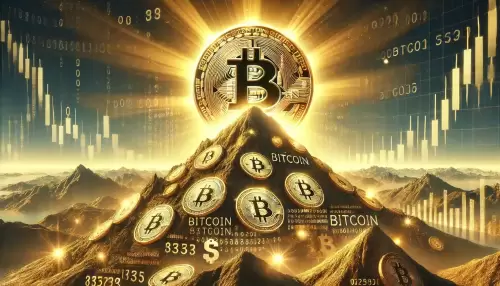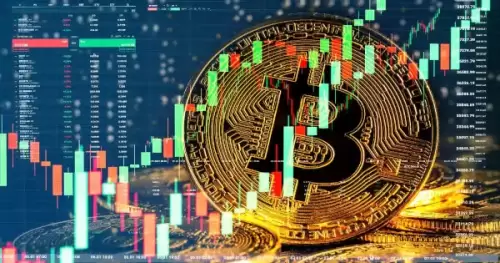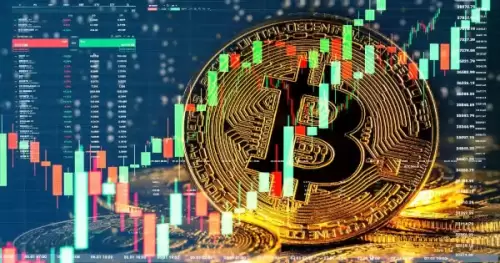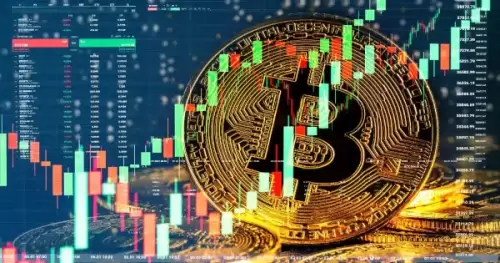 |
|
 |
|
 |
|
 |
|
 |
|
 |
|
 |
|
 |
|
 |
|
 |
|
 |
|
 |
|
 |
|
 |
|
 |
|
Cryptocurrency News Articles
Microtransactions: The Backbone of Incentivized Interactions in the Digital Age
Apr 10, 2025 at 03:00 pm
In the digital age, peer-to-peer (P2P) transactions have fundamentally altered how we exchange value, communicate, and engage online.

In the digital age, peer-to-peer (P2P) transactions are fundamentally altering how we exchange value, communicate, and engage online. The rise of decentralized networks, blockchain technology, and digital payment systems has enabled a new economic paradigm—one where microtransactions serve as the backbone of incentivized interactions.
Whether in social media, digital content creation, or community-driven platforms, microtransactions are redefining how individuals and businesses interact in an increasingly decentralized world.
While often associated with in-game purchases or subscriptions, microtransactions can play a far broader role in the P2P economy. These small-value digital payments create direct, trustless, and cost-efficient value transfers, bypassing intermediaries such as banks or advertising-driven monetization models.
One of the most profound shifts enabled by microtransactions is the incentivization of engagement. Traditional social media platforms rely on advertising revenue, often at the cost of user privacy and content quality.
However, microtransaction-enabled platforms offer a model where users can earn or pay small amounts for meaningful interactions. Imagine a system where social media users reward high-quality posts with tiny payments, effectively creating a market for attention and engagement rather than relying on algorithmic ad placements. This model democratizes content monetization and enhances user experience by aligning financial incentives with value creation.
Content monetization is one of the most promising applications of microtransactions. Digital creators, such as writers, musicians, and video producers, can receive direct financial support from their audiences. Instead of relying on subscriptions or ad revenue, fans can pay creators instantly and effortlessly, ensuring that quality content is rewarded directly by those who consume it.
Decentralized marketplaces also benefit from frictionless micropayments. Services such as freelance work, data-sharing networks, and digital asset trading become more efficient when users can pay per usage or transaction without hefty processing fees. By eliminating unnecessary intermediaries, microtransactions facilitate a seamless value exchange between peers.
Gaming and virtual economies are also quickly adapting to the possibilities of microtransactions. Gamers can tip content creators, trade assets seamlessly, and participate in decentralized gaming ecosystems, fostering a more interactive and financially sustainable gaming experience.
Despite their promise, microtransactions face hurdles such as transaction fees, scalability issues, and regulatory uncertainty. On-chain scaling solutions, such as Teranode, which is currently in testing, are addressing these challenges by enabling blockchain networks to process high volumes of transactions at low cost. The focus is shifting toward scalable infrastructure supporting real-time, low-fee transactions.
Stablecoins, particularly the recently launched MNEE stablecoin on the BSV network, represent the next level of payments. Allowing small amounts of USD to be transacted instantaneously plays a crucial role in microtransaction adoption by minimizing volatility and providing a stable store of value for seamless transactions.
As these solutions gain traction, microtransactions will become more accessible, further embedding themselves into the digital economy.
As these barriers diminish, microtransactions will play an increasingly vital role in redefining digital interactions. By enabling more equitable monetization models, fostering engagement-driven economies, and enhancing P2P exchange efficiencies, microtransactions will continue to fuel the next wave of decentralized innovation.
The question is no longer whether microtransactions will shape the future economy—it’s how soon and to what extent they will revolutionize the digital experience as we know it.
Watch: Peer-to-peer electronic cash system—that’s micropayments
Disclaimer:info@kdj.com
The information provided is not trading advice. kdj.com does not assume any responsibility for any investments made based on the information provided in this article. Cryptocurrencies are highly volatile and it is highly recommended that you invest with caution after thorough research!
If you believe that the content used on this website infringes your copyright, please contact us immediately (info@kdj.com) and we will delete it promptly.





























































